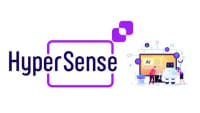Description
Learn the fundamentals of programming required for a career in data science. You will be able to use R, SQL, Command Line, and Git by the end of the programme.
Syllabus:
Course 1: Introduction to SQL
Basic SQL
- Write common SQL commands including SELECT, FROM, and WHERE
- Use logical operators like LIKE, AND, and OR
SQL Joins
- Write JOINs in SQL, as you are now able to combine data from multiple sources to answer more complex business questions
- Understand different types of JOINs and when to use each type
SQL Aggregations
- Write common aggregations in SQL including COUNT, SUM, MIN, and MAX • Write CASE and DATE functions, as well as work with NULLs
Advanced SQL Queries
- Use subqueries, also called CTEs, in a number of different situations
- Use other window functions including RANK, NTILE, LAG, LEAD new functions along with partitions to complete complex tasks
Project: Investigate a Database
In this project, you will use PostgreSQL to work with a relational database. You will complete the entire data analysis process, beginning with a question, running appropriate SQL queries to answer your questions, and concluding with a presentation of your findings.
Course 2: Introduction to R Programming
Introduction to R
- Understand common use cases of R and why it’s popular
- Install & Setup R Environment
- Learn with basic syntax associated with R
- Understand how you can get help when writing R code
Syntax & Data Types
- Work with data structures available in R including scalars, factors, vectors arrays, lists, and dataframes
- Manipulate, compare, and perform fundamental operations associated with each of the data structures
Control Flow & Functions
- Write conditional expressions using if statements and boolean expressions
- Use loops and other built-in functions to iterate over and manipulate data
- Define your own custom functions
Data Visualizations & EDA
- Make beautiful visualizations using the ggplot2 library
- Create commonly used data visualizations for each data type including histograms, scatter plots, and box plots
- Improve your data visualizations using facets
- Create reference variables using appropriate scope
- Use the popular diamonds dataset to put your R skills to work
Project: Explore US Bikeshare Data
You will use R to answer intriguing questions about bikeshare trip data collected from three cities in the United States. You will write code to collect data, compute descriptive statistics, and create an interactive terminal experience that displays the answers to your questions.
Course 3: Introduction to Version Control
Shell Workshop
- The Unix shell is a powerful tool for developers of all sorts. Get a quick introduction to the basics of using it on your computer.
Purpose & Terminology
- Learn why developers use version control and discover ways you use version control in your daily life
- Get an overview of essential Git vocabulary
- Configure Git using the command line
Create a Git Repo
- Create your first Git repository with git init
- Copy an existing Git repository with git clone
- Review the current state of a repository with the powerful git status
Review a Repo’s History
- Review a repo’s commit history git log
- Customize git log’s output using command line flags in order to reveal more (or less) information about each commit
- Use the git show command to display just one commit
Add commits to a Repo
- Master the Git workflow and make commits to an example project
- Use git diff to identify parts of a file that changed in a commit
- Learn how to mark files as “untracked” using .gitignore
Tagging, Branching, and Merging
- Tagging, Branching, and Merging
- Organize your commits with tags and branches
- Jump to particular tags and branches using git checkout
- Learn how to merge together changes on different branches and crush those pesky merge conflicts
Undoing Changes
- Learn how and when to edit or delete an existing commit
- Use git commit’s --amend flag to alter the last commit
- Use git reset and git revert to undo and erase commits
Working with Remotes
- Create remote repositories on GitHub
- Learn how to pull and push changes to the remote repo
Working on Another Repository
- Learn how to fork another developer’s project
- Use GitHub to contribute to a public project
Staying in Sync with a Remote Repository
- Learn how to sync new changes to a forked remote repository, retrieve and sync updates
- Create pull requests and squash commits with git rebase
Project: Post your work on Github
You will learn important tools that all programmers use in this project. First, you'll learn about working in the terminal. Following that, you'll learn how to use git and Github to manage programme versions and collaborate with others on programming projects. In this project, you will add a finished project to GitHub, work with branches, edit a README file and project files, merge branches, stage your changes, and commit your changes to your project's GitHub repository.







